Graz, Austria’s second sustainable city, is slowing down.
Throw all your imagination of Austrian cities out of the window. Graz does not have the grandeur of Vienna, the classical music culture of Salzburg, or the Alps of Innsbruck, but it does have something else — although it is difficult to quantify what this fascinating thing is.
In the pink courtyard dotted with olive trees, there is a slightly Mediterranean atmosphere. In the walking downtown, you will hear the roaring of trams and the jingling of bicycle bells, not cars. About 20% of the population is students, keeping the old city young and beating. A Communist mayor — a surprise in the last election — currently leads the parliament. Of course, there are also two certifications from UNESCO, which are not only the certification of historical core areas, but also the certification of forward-looking design.
Yes, Graz is a city full of mild contradictions. A place where classics and modernity coexist. The cooking creativity here makes you question what you think you know about Chinese and European cuisine. The city’s attention to fresh products is so obvious that the restaurant from the farm to the table is simply called the restaurant, and the stalls in the farmers’ market are about growers, just like the products.
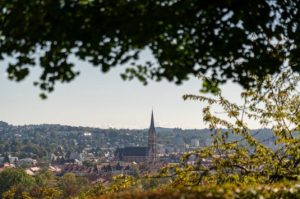
The core of Graz is that as long as it exists, it is a kind of enjoyment. Even before you visit a scenic spot or drink the first glass of Styrian wine, you can’t help thinking how good life would be if every city had this feeling. It is green. There is no car in the central area, and it exudes a social atmosphere. It invites you to stay here longer than you plan. Of course, this makes it a sustainable urban holiday in our dreams?
Slowing down sustainability
Austria’s second largest city is not only boasting about its green certificate, but also living in it. Of course, in this city with 60% green space, it is easy to be boasted, but sustainability is not just a buzzword here, it seems to be a way of life. From supporting those struggling on the street to upgrading and transforming shops to reinterpreting yesterday’s leftover zero-waste cafes, the community, like the surrounding environment, should be grateful for the city’s ecological drive.
Graz provides more than just water replenishers — although there are many such water replenishers in the whole city — from the moment I got off the train from the Czech Republic, I clearly saw the extent of Graz’s reduction and reuse of ideas.
I started looking for warm pants when I was a little careless in packing. When I open Google Maps, no less than ten second-hand clothing stores flash in front of me, which seems to be more than fast fashion chain stores on every high street in Europe.
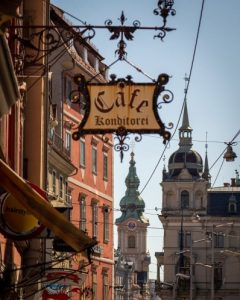
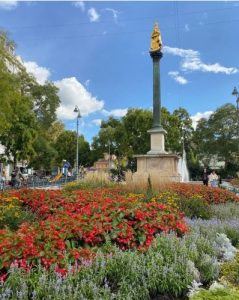
Jumping on the tram — free in the city center — shows the amount of carbon dioxide used in each journey. I soon realized how suitable and compact the core of the city is for walking. Without cars, the magnificent Central Avenue provides a paradise for pedestrians and bicycles to coexist. Occasionally, there will be regular tram and the city’s new non-emission hydrogen bus to give way.
Graz’s goal is to become a walkable city, and everything you need can be reached on foot. This goal is in progress. When walking on the street, it is as pleasant as here, and this goal seems easier to achieve.
In this city with a population of less than 300000, one in five residents is a student. The desire for a clean and climate-sensitive city is prominent in all recent public opinion surveys. The Green Party has been growing in the local government of Graz, reflecting the concerns of residents, and numerous initiatives focusing on ecology have been born.
However, this is not the only continental trend in the local political structure. The recent unexpected election of the city’s first Communist mayor — a platform to promote rent freeze and limit gentrification — shows this. However, this is not only a government-led effort to make Graz a more environmentally friendly and fair city. Charities, non-governmental organizations, partners and local enterprises have joined forces to form a better and more community-based living place.
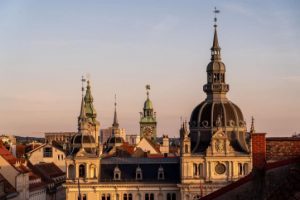
An ancient city with young souls: design, culture and community
Graz has an architectural history of nearly a thousand years, and there are many things to do. The old city meets many conditions of any famous European historical city, even if it often changes a little.
Of course, there is a grand opera house here, but there is a towering modern Statue of Liberty, decorated with a sword. In it, not only classic works are displayed, but also Graz’s growing music industry, which has special feelings for jazz. Outside the main monument, there are also some smaller statues. The copper model reproduces the miniature of the scenic spot on the base, enabling the visually impaired to “see” the city’s buildings.
Story-filled streets connect countless courtyards, and occasionally memorial stones – an ongoing project – sink to the ground to remind those persecuted or killed by the Nazis. These more than 50 courtyards with a long history are often dotted with wine bars, providing an Italian edge for the city and some mazes similar to the Mediterranean.
You will also find that there is the most extensive historical armory in the world — which proves that the city sometimes has a troubled past — although the huge dolomite standing in the center of the city provides the most impressive story of the community in the face of invasion.
As a symbol of the city and a reminder of the feelings of the past residents towards their hometown, Urtoum — a small, stump-like clock tower — crowned the city. When Napoleon’s army destroyed the huge Fort Schlossberg that once stood above the old city, the residents paid a ransom to protect their beloved clock tower from the same fate.
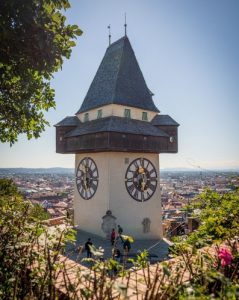
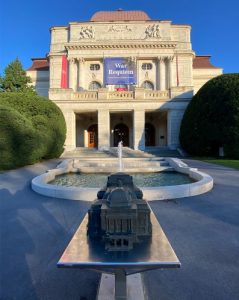
Although most parts of the fortress of Schlosser no longer exist – like the story of the people who lived there in the 8th century BC – the green space on the high ground is endowed with the perfect panorama of postcards. Have a cup of coffee here, try to find the strange things about the clock pointer, and then you can even slide from the inside to the bottom; Graz likes to keep a little fun and doesn’t take himself too seriously.
The community, like Graz itself, is not just a story of the past. Everything here seems to be very harmonious. There are 150 languages in the city, and one in five residents is a student. The young and the elderly are striving to move forward — the old city is still a residential area, not occupied by holiday rental, which is very helpful for the development of the old city.
These changes did not happen overnight; A special turning point of Graz’s story was in 2003, when it was awarded the title of European Capital of Culture. This city no longer has the status of world heritage only because of the old medieval city, but also has been designated by UNESCO as the “City of Design”. This honor honors Graz’s design school, forward-looking architecture and embrace of modern urban design, making it the second city in the European continent to have these two titles, and the other is Berlin.
Although you will find that the contemporary architecture and classic architecture of the whole city are intertwined — from the curved architecture of the late Iraq-British architect Zaha Hadid to the above Statue of Liberty — the two most future symbols of the city connect the most magnificent part of the city with two less visited blocks: Linde and Gris.
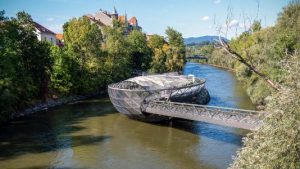
The other side “.
My local guide Ruth smiled and said, “My grandmother warned me not to move here”, as we crossed the Mur River to the Lund district of the city.
This is my introduction to “the other side”, which I often hear during my visit. It reminds me of some lawless places across the river. Facts have proved that Lend District used to be such a place; Now it has changed its face.
Before arriving at the center of this emerging (pronounced: beginning gentrification) region, you will encounter the two most prominent modern architectural wonders of the city.
The first is Murinsal, an artificial island connected by a bridge, which was originally designed to float on the Hudson River in New York City. The glass and steel sidewalks combine the two sides of Graz. On the middle platform, the art works are displayed when the local people drink latte coffee.
Going further, Kunsthaus, the modern art museum in the city, is like a prominent thumb — or a friendly alien — and the locals have given it a friendly name. This is a vast space made of black glass. At night, it becomes an LED screen. The tentacle windows climb out of the roof, and contemporary and modern exhibitions inhabit inside.
These two buildings have changed the whole city forever — at first, the local people were very dismissive — but for Lend, they are the beginning of the catalyst for change.
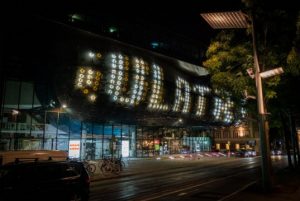
At first glance, this block is very similar to the old city. The magnificent baroque church and pink exterior wall are arranged on the street, hiding the stories of sex work, revelry and crime in the past. This historic trade route and red light area connect Vienna and Trieste.
Although the rich and handsome people in the old city no longer avoid this area as before, even in the process of urbanization, it still maintains a certain reputation for the people and creators who pursue freedom.
Today, brothels have been reborn as fashionable cocktail bars, organic restaurants provide food from all over the world, and shops that focus on social impact, such as Offline Retail, are upgraded while creating jobs and supporting local communities. For Lend, this is a relatively recent rapid change. Perhaps the increase in the rate of change — and rent — can provide an answer to the impact of the recent mayoral election.
This is a part of the city. You take risks to go there just to enjoy the atmosphere, not to check the scenic spots, and provide a welcome and complementary atmosphere change for the bright old city.
In nearby Gris, where gentrification is not so obvious, Ruth told me that you can experience the air of Lund more than ten years ago. There are community-centered festivals here — I happened to find a street party founded by a hairdresser many years ago — an active church remodeled with graffiti style modern art, and so many independent bars, galleries, and craft shops. It feels like Graz, which is different from the wine bar in the old city.
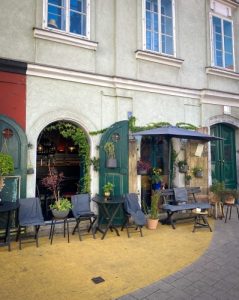

From farm to table
It was a cold September afternoon, and the capital of Styria was still struggling to survive the summer. The smell of pumpkin oil wafts in the air during lunch time, and the clash of glasses is to celebrate the arrival of this year’s Sturm, which is still fermenting only in the harvest season.
The village of Styria around Graz, with its fertile farmland, has played a huge role in the city’s status as the culinary capital of Austria. However, this title is more than a marketing gimmick. It leads to the philosophy of what food should be in the whole city.
When I asked the receptionist of the Gorna Hotel (the characteristic family hotel I call “home”) how to recommend some restaurants from farm to table, I got a questioning look. In this city, eating local products is not worth celebrating. On the contrary, it is a standard. Some reviewed institutions have marked their windows with “Genus Hauptstadt”, indicating their commitment to high-quality, local and seasonal products. However, these are far from the only catering choices that follow this spirit.
Take Hummel as an example. This is a low-waste concept restaurant led by women, located in the developing Lend district. Organic coffee beans and homemade biological jam adorn the shelves of restaurants and stores, while the soft pink furniture perfectly blends with the brown recycled napkins on the table. Unlike the Ottomans in the 17th century, their progress and invasion in the region are certainly not welcome, but the delicious Levant style dishes on the table are certainly welcome.
When I took the first bite, the concept of “zero waste” became very clear; It’s too delicious to leave any. Of course, their qualifications are more clear than that. The raw materials come from their unpackaged grocery store, Das Gramm. I want to know, after eating a mouthful of broccoli, how can it absorb so much flavor without completely turning into mud? I decided that this was an engineering feat, not cooking, and quickly transferred to one of more than 20 other dishes. Two hours later, when I left, I ate and laughed like I had won the lottery. I found a “Reuse Bread” shop across the street, where yesterday’s bread had a chance to sell to another table at a discount.
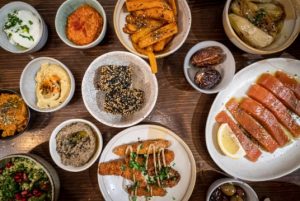
Vegetarians will also find that it is a holy place for delicious food. There are numerous restaurants specializing in raw food and organic products. This concept is not limited to dining out; Even local schools and government offices have set up a meat free day every Wednesday. In Graz, eating well is not a hard job, and high-quality food does not necessarily cost a lot.
Take fast food for example — forget McDonald’s — Graz’s fast food menu is more exciting and green. In Swing Kitchen, I tasted the most delicious vegetarian hamburger and diluted it with bottled water in a tin cup. Similarly, you can’t find Starbucks here; Instead, you can go to the local chain store Tribeka for a cup of Fair Trade coffee. Even vending machines also provide local products, and many farms around them have honest box-type stores open 24 hours a day, which can buy fresh products at the last minute.
Of course, to understand the recent harvest of Graz growers, there is no need to go to the countryside — although it is strongly recommended. Farmers’ markets are all over the city. From Monday to Saturday, the people who grow these good things are shouting their ochre pumpkins and rich red berries, adding a touch of bright color and friendly jokes to the fresh products.
Ruth told me, “What we really like is those small bars on the edge of the market.” We drank the homemade Schilcher wine, which is a peach wine made from local grapes in the region.
“She continued:” On summer nights, people meet friends here, skate, enjoy music, and even take salsa classes. “This is a good place for food and entertainment”.
Although we often visit the market when traveling to understand the situation of a place, you will get far more here. You will receive a gift of pride from the residents.

From the local chef Moni who made dumplings in her specially built kitchen and distributed them to restaurants in the city — please pay attention to her name on the menu — to Helena, a farmer who was making jam when I visited Fattingerhof, which is an out-of-town bus hotel (rural farm hotel), her pride was distributed among the residents of Graz.
However, this important ingredient is not only reflected in the things produced here; It is also a passion to protect lush landscapes for future generations. Whether Susanne Huber told me about her sustainable silk screen printing fashion, or the use of the most advanced replanted wood fabric by Peaces, or the employees of TAG werk explained how their fashionable recycled backpacks create youth employment, they could not deny that sustainability is a very realistic goal.
When I left — take the night train to Italy, follow the city’s green certificate — I realized that Austria has unwittingly become one of my favorite countries.
If you let me tell you why, I can’t really quantify it, except at the beginning of my article — Graz is just a wonderful place — it summarizes this point in a way that is far from pretentious, while other destinations prefer green light rather than advance, their sustainable development ambitions.
My Graz suggestion? Forget the whirlwind tour of the highlights, and calm down. The Stilia people will make you feel at home, and your stomach will thank you.